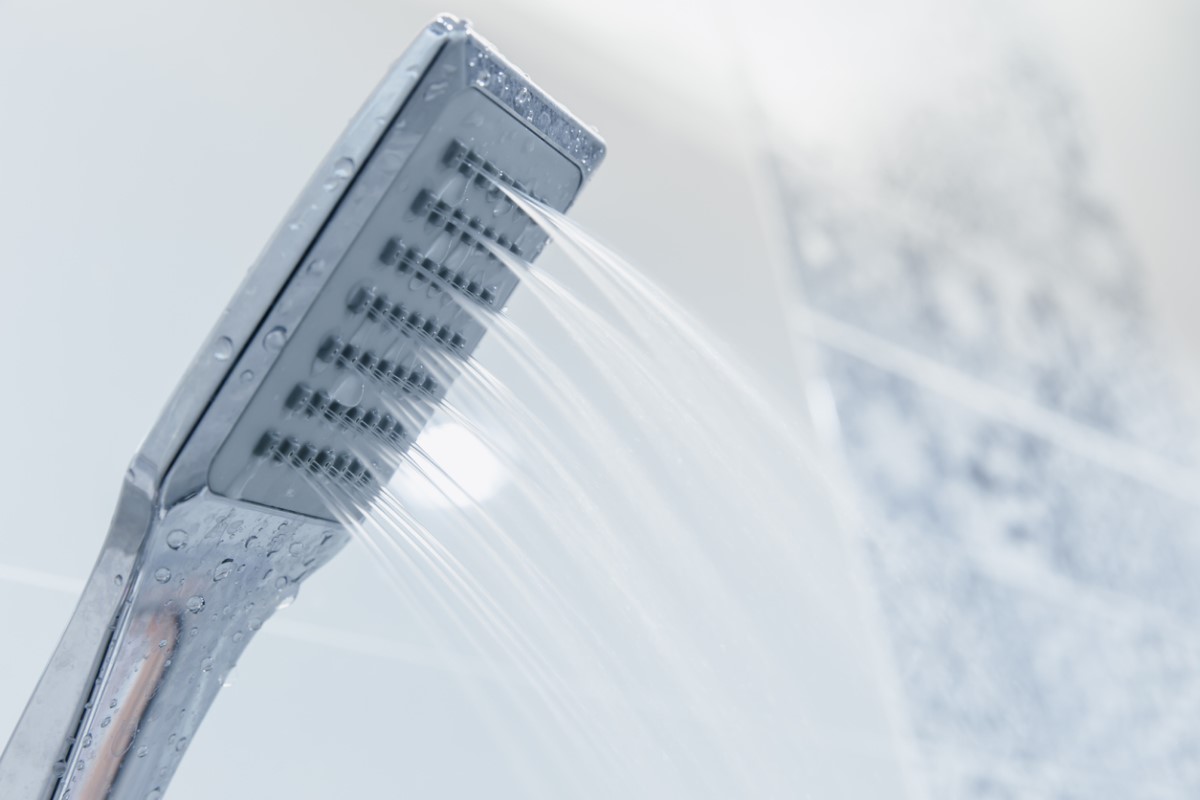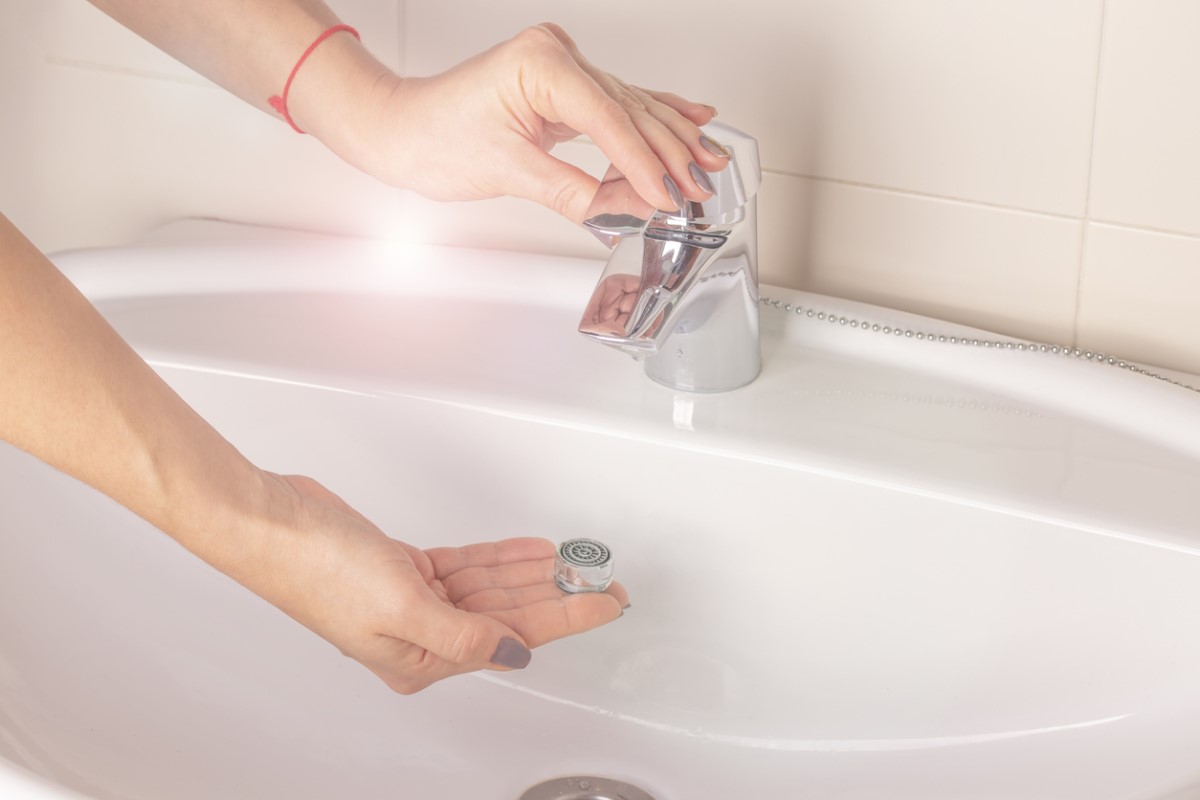We may earn revenue from the products available on this page and participate in affiliate programs. Learn More ›
If you’ve checked out the faucet and fixture aisle at your home improvement center recently, you’ve undoubtedly seen numerous showerheads, toilets, and sink faucets labeled as low flow, with added claims of reducing water consumption. The term “low flow” refers to fixtures that use a lesser amount of water to accomplish everyday activities, such as showering, washing your hands, or flushing the toilet. In some cases, low-flow fixtures can reduce water usage by as much as 60 percent over standard fixtures.
RELATED: 30 Water-Saving Habits to Start Right Now
That’s why a growing number of states, including California, Colorado, and Texas, have enacted low-flow legislation, and if you live in one of those states, you have no option other than buying low-flow fixtures, because retailers are banned from selling standard models. The good news is how well low-flow technology works to deliver an excellent bathroom experience. Keep reading to learn the ins and outs of today’s low-flow fixtures—and why it’s probably a good idea to replace your old models with new eco-tech ones now.
1. Less water doesn’t always mean less pressure.
While low-flow sink faucets haven’t caused concern, some folks associate low-flow showerheads with poor water pressure and wimpy, unsatisfying showers. While a reduction in water is inevitable—that’s the purpose of low-flow, after all—you might be surprised to discover that many low-flow showerheads can bring quite an invigorating blast. There are two main types of water-saving showerheads, aerating and laminar, that produce satisfying (and somewhat different) showers while reducing water waste.
- Aerating: An aerating showerhead works by forcing water through small holes in a screen, which adds air to the water and produces a fine but vigorous spray. While this reduces the overall amount of water the showerhead emits, it increases the pressure of the individual water streams. An aerating showerhead produces a truly invigorating spray, often compared to “needles” of water, and will also create an especially steamy shower. Because air is mixed into the water, however, it lowers water temperature slightly, so you may find yourself using more hot water to maintain your comfort level.
- Laminar: Defined as a “constant streams of non-turbulent water,” laminar technology doesn’t mix air into the water stream, so you won’t get the sharp “needles” of an aerating head. Instead, laminar showerheads and faucets distribute the water into larger individual streams, and they often come with an adjustable feature that allows the user to select a gentle spray or a robust massaging action. Laminar technology is also used in overhead rain-type showerheads for a gentle soaking that many people find soothing. This type of showerhead will not produce as much steam as an aerating model—a plus for poorly ventilated bathrooms, as excess steam can damage paint, wallboard, and cabinets.

2. Low-flow toilets are big water savers.
A standard toilet is often the biggest water waster in the house. According to the Environmental Protection Agency (EPA), older toilets can guzzle up to six gallons of water per flush (GPF), while low-flow models use less than 1.5 GPF. Early incarnations of low-flow toilets, designed on the same gravity-flow principle as standard toilets but holding less water, often failed to provide enough water pressure to flush the contents of the toilet bowl; clogs were common and frustrated folks found themselves having to plunge toilets frequently. Today’s low-flow toilets have been greatly improved, with two types now available: those with streamlined gravity-flow design to reduce clogging, and those with pressure-assist technology to produce a jet-like, clog-free flush.
- Gravity Flow: Standard gravity-flow toilets work by introducing a large amount of water into the toilet bowl until the pressure of the water is sufficient to push the contents of the bowl downward through the curved “trap” beneath the bowl. This works well but requires a lot of water. Newer gravity-flow toilets feature a modified trap design that doesn’t require as much water pressure before the contents of the bowl will drain. This new trap design creates a “siphoning effect,” meaning once the water begins to drain through the trap, it will continue without the need for additional water.
- Pressure Assist: If you’ve used a restroom in a large public place like a mall recently, you’ve probably seen a pressure-assist toilet. When the handle is depressed, water rushes forcefully into the toilet bowl, and the contents flush away quickly. The force of the water is created by a pressurized water tank, and this type of toilet is often marketed as a “jet-flush” toilet. Initially used mainly for public bathrooms, residential models are now available for home installation.
3. Standards are rigorous.
The EPA sets high standards for determining what qualifies as a low-flow faucet or fixture, and only if the product meets strict water-reduction standards during testing can it earn the EPA’s WaterSense label. Products that claim to reduce water usage but do not bear the WaterSense label might not be as water-efficient. To qualify for the WaterSense designation, the individual models must meet the following criteria:
- A low-flow showerhead must not exceed a maximum of 2.5 gallons per minute (GPM) water flow.
- A low-flow sink faucet must not exceed a maximum of 1.5 GPM.
- A low-flow toilet must use no more than 1.5 gallons per flush (GPF).

4. You’ll conserve more water—and money—than you think!
Depending on your water usage habits and the size of your family, you could save $170 per year or more in water costs by going low flow, according to an EPA report. Switching to more efficient faucets and fixtures will quickly pay for itself, but the biggest reason to replace your old water-wasting models is the sheer amount of water you’ll conserve. While 71 percent of the planet is covered in water, only three percent is fresh (not salt water) and only 0.5 percent is suitable for drinking, the Bureau of Reclamation reports, so it behooves all of us to do our part to end wasteful water consumption. By replacing old faucets and fixtures with ones that bear the WaterSense label, you’ll conserve:
- as much as four gallons of water, or more, depending on the length of the shower. That’s a savings of about 1,460 gallons per year per family member.
- 700 gallons of water per year just by switching to low-flow faucets.
- up to 13,000 gallons of water per year by replacing a standard toilet with a low-flow model.
5. Low-flow faucet, showerhead, and toilet manufacturers continue to improve their products.
Low-flow fixture manufacturers have been busy developing models to reduce some of the common problems associated with reduced water usage. Factor in the strides made in the products below when researching low-flow fixtures for your home.
- Avoid the need to flush twice by selecting a dual-flush toilet, such as the American Standard Dual-Flush Toilet (available on Amazon) that features two flush buttons. One button releases 1.5 gallons, perfect for flushing away solid waste. A second button releases just 0.9 gallons, which should be used when only liquids are flushed.
- For ample pressure from a low-flow showerhead, consider one that can be positioned in its holder for all-around showering and hand-held for directing a stronger spray right where you need it. An adjustable low-flow showerhead, such as High Sierra’s Showerhead (available on Amazon), uses just 1.5 GPM and can be set to an invigorating spray or a vigorous massaging action.
- If you’re not ready to replace your current sink faucets but you’d like to conserve more water, you can add an aerator to your existing faucet. These devices, which simply screw on the end of the faucet, can reduce your faucet’s water flow as much as if you installed a new low-flow faucet. Add-on aerators, such as those from AM Conservation Group (available on Amazon), will reduce your sink’s water flow to 1.5 GPM, providing the same low-flow benefit as if you replaced your entire faucet with a water-saving model.


